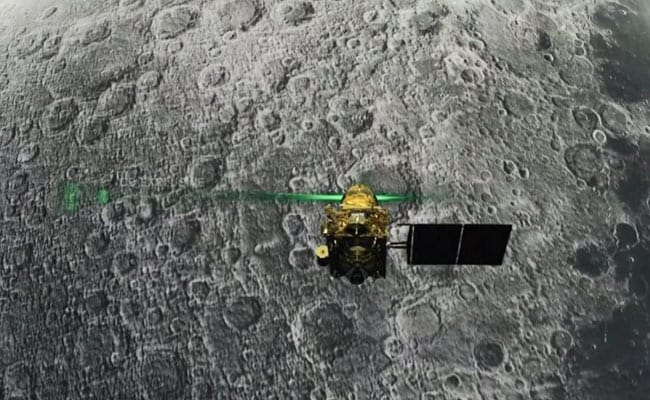
[ad_1]

Chandrayaan-2 mapped the abundance of sodium on the Moon for the very first time.
Bengaluru:
The X-ray spectrometer ‘CLASS’ on the Chandrayaan-2 Orbiter has mapped an abundance of sodium on the moon for the primary time, in accordance with the Indian Space Research Organisation (ISRO).
Chandrayaan-1 X-ray Fluorescence Spectrometer (C1XS) detected sodium from its attribute line in X-rays which opened up the opportunity of mapping the quantity of sodium on the Moon, it mentioned.
In a current work revealed in ‘The Astrophysical Journal Letters’, Chandrayaan-2 mapped the abundance of sodium on the Moon for the very first time utilizing CLASS (Chandrayaan-2 Large Area Soft X-ray Spectrometer), the nationwide house company mentioned in a press release on Friday.
“Built at the U R Rao Satellite Centre of ISRO in Bengaluru, CLASS provides clean signatures of the sodium line thanks to its high sensitivity and performance,” the assertion mentioned.
The examine finds that part of the sign may very well be arising from a skinny veneer of sodium atoms weakly sure to the lunar grains.
These sodium atoms may be nudged out of the floor by photo voltaic wind or ultraviolet radiation extra simply than in the event that they had been a part of the lunar minerals. Also proven is a diurnal variation of the floor sodium that might clarify the continual provide of atoms to the exosphere, sustaining it, the assertion mentioned.
An attention-grabbing side that widens the curiosity on this alkali aspect is its presence within the wispy environment of the moon, a area so skinny that the atoms there not often meet.
This area, termed an ‘exosphere’, begins on the floor of the moon and extends a number of thousand kilometres merging into the interplanetary house, the assertion famous.
“The new findings from Chandrayaan-2, provide an avenue to study surface-exosphere interaction on the moon, which would aid development of similar models for mercury and other airless bodies in our solar system and beyond,” the ISRO mentioned.
(Except for the headline, this story has not been edited by NDTV workers and is revealed from a syndicated feed.)
[ad_2]